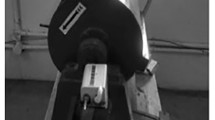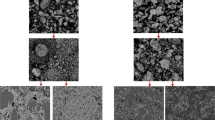Conclusions
The best processing properties are exhibited by brass powders manufactured by the diffusional impregnation technique, using a zinc powder, brass swarf, or a copper-zinc master alloy as a point source. However, as this is a very labor-intensive process, normally preference should be given to melt atomization as a method of manufacture of brass powders. Brass P/M parts produced by the conventional method consisting of pressing a powder and sintering the resultant compacts have porosities of not less than 7–10%, and consequently this method is not widely used for the production of constructional brass parts. The sintering of compacts from copper and copper-zinc master alloy powders gives more stable zinc contents compared with the sintering of compacts from copper and zinc powders; the greatest stability of chemical composition is exhibited by sintered compacts from a homogenized brass powder. The formation of diffusional porosity accompanying the evaporation of zinc may be prevented by performing sintering in the presence of a liquid phase (which appears in the presence of a phosphorus or lead addition), saturating the sintering atmosphere with zinc vapor, and adding carbonates or halides of alkali and rare-earth metals to starting powders. The mechanical properties of materials can be markedly improved by eliminating their porosity. This may be achieved by subjecting porous preforms to hot forging, which enables brass P/M parts to be obtained whose mechanical properties are comparable to those of cast parts.
Similar content being viewed by others
Literature cited
A. V. Dovydenkova and I. D. Radomysel'skii, “Production and properties of constructional parts from copper and copper alloy powders: a review,” Poroshk. Metall., No. 3, 44–53 (1982).
A. A. Presnyakov, V. V. Chervyakova, U. K. Duisemaliev, and A. I. Novikov, Brasses. Solid-State Transformations and Processing Properties [in Russian], Metallurgiya, Moscow (1969).
V. V. Chervyakova and A. A. Presnyakov, Complex Brasses and Bronzes [in Russian], Nauka, Alma-Ata (1974).
B. A. Kolachev, V. A. Livanov, and V. I. Elagin, Metallurgy and Heat Treatment of Nonferrous Metals and Alloys [in Russian], Metallurgiya, Moscow (1981).
E. Palmer and D. Grimme, “Investigation of the possibility of production of P/M brass parts,” in: New Materials Produced by Powder Metallurgy Methods [Russian translation], Metallurgiya, Moscow (1966), pp. 137–146.
B. I. Baskakov, “Industrial production of sintered brass parts,” in: Sintered Constructional Materials [in Russian], Inst. Probl. Materialoved., Akad. Nauk Ukr. SSR, Kiev (1974), pp. 165–171.
“Method of production of sintered brass of high Zn content,” Jpn. Pat. No. 563401 (1981).
S. Kunyo, “Use of brass swarf as a raw material for powder metallurgy,” Kikai Gidzyutsu, Mech. Eng.,29, No. 10, 75–80 (1981).
Jpn. Pat. No. 5555501, Ref. Zh. Metall., No. 2 (No. 2E103) (1982).
“Copper powder for the production of contacts,” Jpn. Pat. No. 5536041 (1980).
V. E. Terletskii, “Production of brass powder and sintered brass parts by the method of diffusional impregnation from a gaseous phase,” Poroshk. Metall., No. 3, 35–39 (1961).
V. E. Terletskii, “Investigation of conditions of production of brass powders and of the sintering of parts from them,” Author's Abstract of Candidate's Dissertation, Kiev (1972).
B. I. Baskakov, B. Ya. Zhezmer, R. A. Ivanova, and V. L. Memelov, “Sintered brass shoes of stationary magnetic starter contacts,” in: New Developments in Electrical P/M Materials [in Russian], Moscow (1969), pp. 51–55.
V. E. Terletskii, V. S. Kalish, S. V. Bronin, and V. A. Shatskii, “Production of brass powder and constructional brass parts,” in: Sintered Constructional Materials [in Russian], Inst. Probl. Mater., Akad. Nauk Ukr. SSR, Kiev (1972), pp. 17–25.
A. Popov and A. Mechkov, “Possibility of production of sintered brass parts of predetermined physicomechanical properties,” Tr. Inst. Metallokeram.,9, 52–65 (1979).
V. A. Belyakov, A. B. Medvedovskii, O. S. Nichiporenko, et al., “Properties of atomized brass powder,” Poroshk. Metall., No. 6, 13–15 (1981).
L. P. Seleznev and N. P. Kostyunina, “Granulation as a method of increasing the ductility of LS63-3 lead brass,” in: Plastic Working of Metals [in Russian], Tr. Frunze Politekh. Inst., Vol. 82 (1974), pp. 73–82.
A. I. Levin, “Ways of improving the production of electrolytic nonferrous metal powders,” Tsvetn.” Met., No. 7, 27–31 (1981).
G. A. Emel'yanenko, V. p. Portretnyi, and T. G. Nel'ga, “Copper and brass electrodeposition from a ferrocyanide electrolyte,” Zh. Prikl. Khim., No. 6 (1969).
K. Okimoto, T. Sato, and T. Yamakawa, “Effect of zinc stearate on the densification of metal powders,” J., Jpn. Soc. Powder Metall.,22, No. 7, 213–219 (1975).
V. E. Terletskii, I. Yu. Épshtein, and S. V. Bronin, “Production of sintered brass from unhomogenized-powder mixtures by liquid-phase sintering,” in: Sintered Constructional Materials [in Russian], Kiev (1976), pp. 51–55.
B. I. Baskakov, V. A. Al'tman, V. M. Érastova, and A. A. Fridman, “Investigation of the phase composition of sintered brass,” Tr. Vses. Nauchno-Issled. Inst. Élektromekh.,40, 156–160 (1974).
X. Toru, “Production of brass by sintering,” Funtai Kogaku, Powder Technol.,7, No. 9, 47–51 (1970).
“Cu-Zn alloy powder and method of its treatment,” Jpn. Pat. No. 5662908, Ref. Zh., Metall., No. 1 (1981).
“Production of parts from sintered preforms by rolling and forging,” Jpn. Pat. No. 5624485 (1980).
“Method of manufacture of Cu-base alloy powders intended for parts produced from sintered preforms by rolling and forging,” Jpn. Pat. No. 5416260, Ref. Zh., Metall., No. 1 (1981).
“Corrosion-resistant sintered Cu-base alloy of high Zn content,” Jpn. Pat. No. 5530507 (1980).
“Sintered cobalt-containing brasses,” U.S. Pat. No. 4139378 (1979).
A. Popov and I. P'lov, “Hot-pressed parts from brass powders,” Tr. Inst. Metallokeram.,10, 83–91 (1980).
V. A. Kolesnikov and M. A. Yurchenko, “P/M brasses,” in: Hot Pressing in Powder Metallurgy [in Russian], Novocherkassk (1981), pp. 142–145.
I. D. Radomysel'skii, G. E. Mazharova, and G. K. Gaiduchenko, “Hot forging of dense parts from atomized brass powders,” Kuznechno-Shtampovochnoe Proizvodn., No. 8, 12 (1982).
M. V. Storozhev, P. I. Seredin, and S. B. Kirsanov, Cold and Hot Forging of Nonferrous Metals and Alloys [in Russian], Vysshaya Shkola, Moscow (1967).
V. N. Fedorov, B. N. Efremov, M. I. Lavrent'ev, and E. G. Trankovskii, “High-temperature ductility of brasses under phase transition conditions,” Tsvetn. Met., No. 6, 83–84 (1982).
Kh. Zeverin, “Induction heating as a means of improving the quality of small brass parts,” Tsvetn. Met., No. 7, 74 (1981).
Author information
Authors and Affiliations
Additional information
Translated from Eoroshkovaya Metallurgiya, No. 3(255), pp. 56–64, March, 1984.
Rights and permissions
About this article
Cite this article
Radomysel'skii, I.D., Baglyuk, G.A. & Mazharova, G.E. Production and properties of brass-base P/M constructional materials. A review. Powder Metall Met Ceram 23, 218–225 (1984). https://doi.org/10.1007/BF00791806
Received:
Issue Date:
DOI: https://doi.org/10.1007/BF00791806




